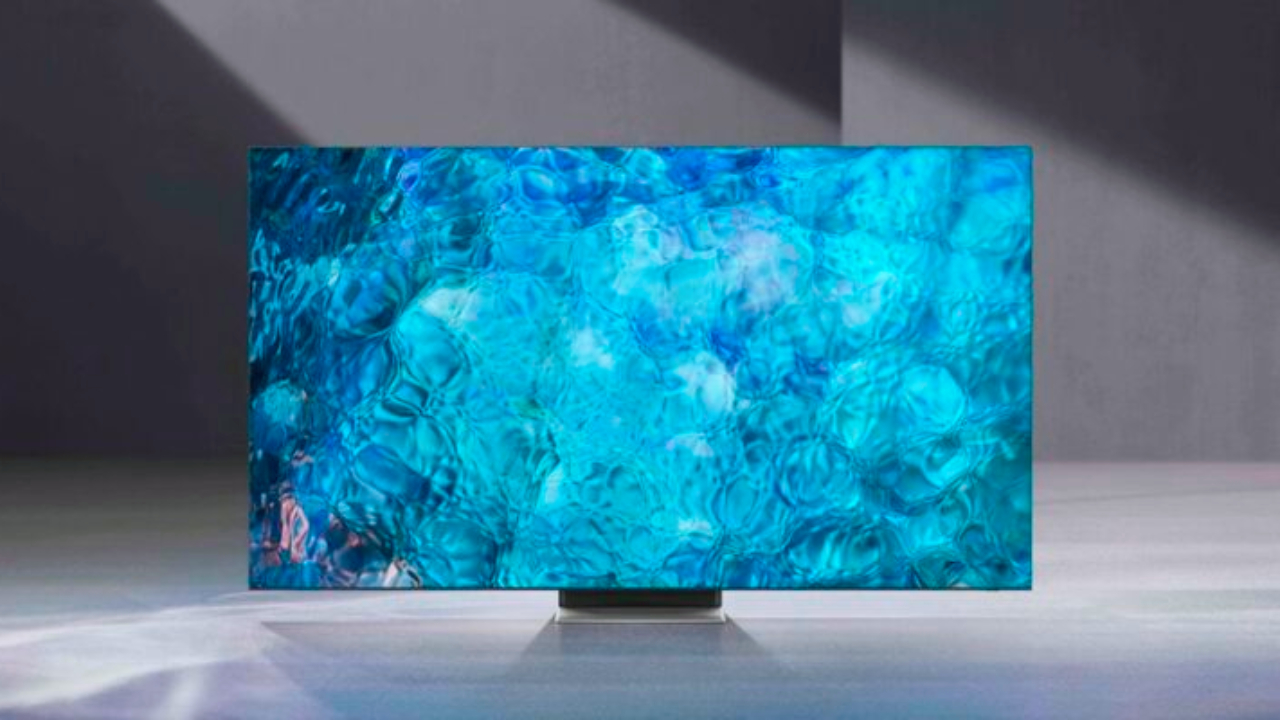QD-OLED is great for TV lovers, but not for the reason you think

Since Sony and Samsung unveiled their upcoming Bravia A95K QD-OLED and new S95B OLED, respectively, lots of the messaging has focused on their ability to obtain 200% the color saturation of LED-LCD TVs and have a higher peak brightness than traditional OLED TVs. As it turns out, though, that’s probably not their coolest feature.
At a recent demonstration of Sony's QD-OLED TV in New York, we were absolutely floored by how well it handled off-axis coloration desaturation - a huge problem with LED-LCD TVs and, somewhat, traditional OLED TVs that lost saturation beyond a 60-degree viewing angle.
While neither Samsung nor Sony has given exact numbers on how much off-axis saturation improved, both have confirmed that QD-OLED’s off-axis performance has seen a significant improvement compared to traditional OLED panels.
In short, folks who have a huge living room - or at least a wide one where not everyone is sitting directly in front of the TV - should be considering a QD-OLED for the next TV.
The power of QD-OLED’s new panel structure
At this point, we’ve spent ample time in our first look at the technology on why QD-OLED is revolutionizing the TV space with its better color saturation. We’ve talked at length in some of our hands-on reviews of the new QD-OLED sets about how it combines a higher peak brightness with the incredible black levels of OLED.
But what we haven’t covered as much, is how well QD-OLED holds its colors when viewed off-axis.
QD-OLED’s QD-light emitting layer is directly behind the glass substrate of the screen, which is what helps it hold color as you move off-axis.
By repositioning the lighting element closer to the front of the screen, colors are more vivid. That’s a big difference from traditional LED-LCD screens where the lighting element and color filter are closer to the back of the screen than the front.
Sign up for breaking news, reviews, opinion, top tech deals, and more.
By contrast, QD-OLED’s QD-light emitting layer is directly behind the glass substrate of the screen, which is what helps it hold color as you move off-axis.

How is better off-axis color saturation useful?
There are two good scenarios where we think QD-OLED TVs will really excel when it comes to off-axis viewing: in a very wide living room and in sports bars where very few people are sitting directly in front of a big-screen TV.
Imagine first that you have a living room that’s wide and there’s plenty of seating off to the side of the TV, but only a few seats directly in front. The better color saturation, combined with the higher peak brightness and OLED’s black levels, could make any seat in the house as good as the one that’s directly in front of the TV.
Now imagine you own a bar and you want everyone inside to have a good view of the TV, regardless of where they’re sitting. QD-OLED can make that happen.
Whether you’re sitting at the bar itself, or at a table nearby but not quite in line with the TV, players' jerseys would remain fully saturated - which will obviously improve the overall experience of watching a game.

The only problem? Price
The biggest hurdle that we see for QD-OLED right now is that it’s priced higher than most OLED TVs. For example, the LG C2 OLED will start off at $1,399 (around £1,060, AU$1,900) and should cost $1,799 for the 55-inch screen size - which is around $400 cheaper than Samsung’s 55-inch S95B OLED TV.
That gap widens when you compare the 65-inch LG C2 OLED, which will retail for $2,499, against the 65-inch Samsung S95B OLED, which will sell for $2,999.
For avid AV enthusiasts, that $400 to $500 probably won’t prevent them from going all-in on the new technology - but for bar owners looking to save some money, it could be a deal-breaker.
Like most high-end TV technology, we’re expecting that QD-OLED will eventually come down in price the same way traditional OLED has in the last five years, and eventually, we’ll get to the point where most folks can experience the off-axis color saturation for themselves, either in their own homes or at the local brewpub.

Nick Pino is Managing Editor, TV and AV for TechRadar's sister site, Tom's Guide. Previously, he was the Senior Editor of Home Entertainment at TechRadar, covering TVs, headphones, speakers, video games, VR and streaming devices. He's also written for GamesRadar+, Official Xbox Magazine, PC Gamer and other outlets over the last decade, and he has a degree in computer science he's not using if anyone wants it.